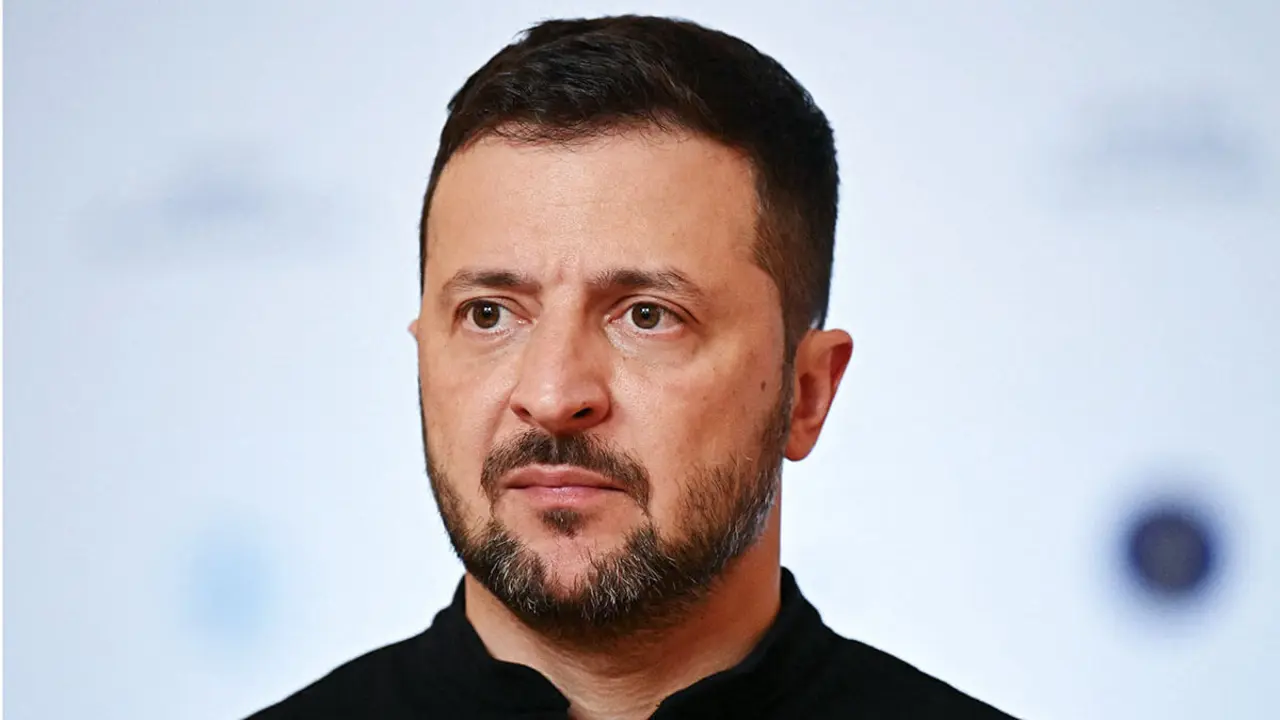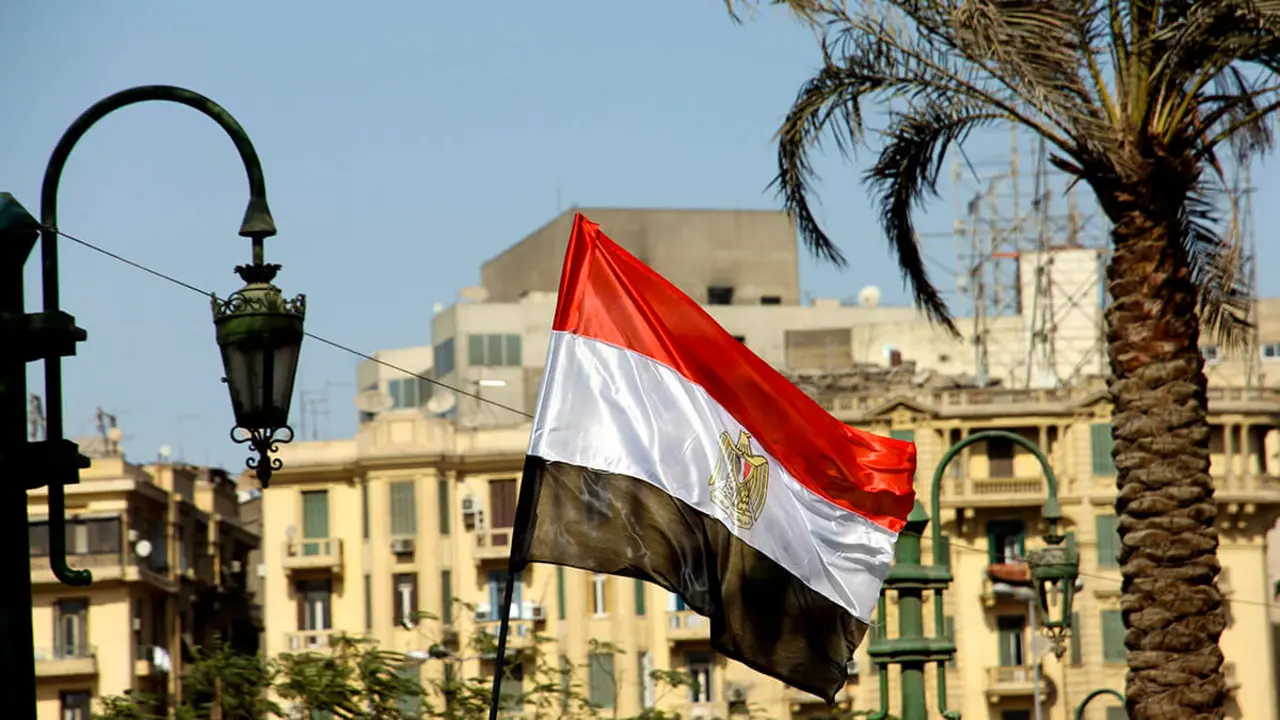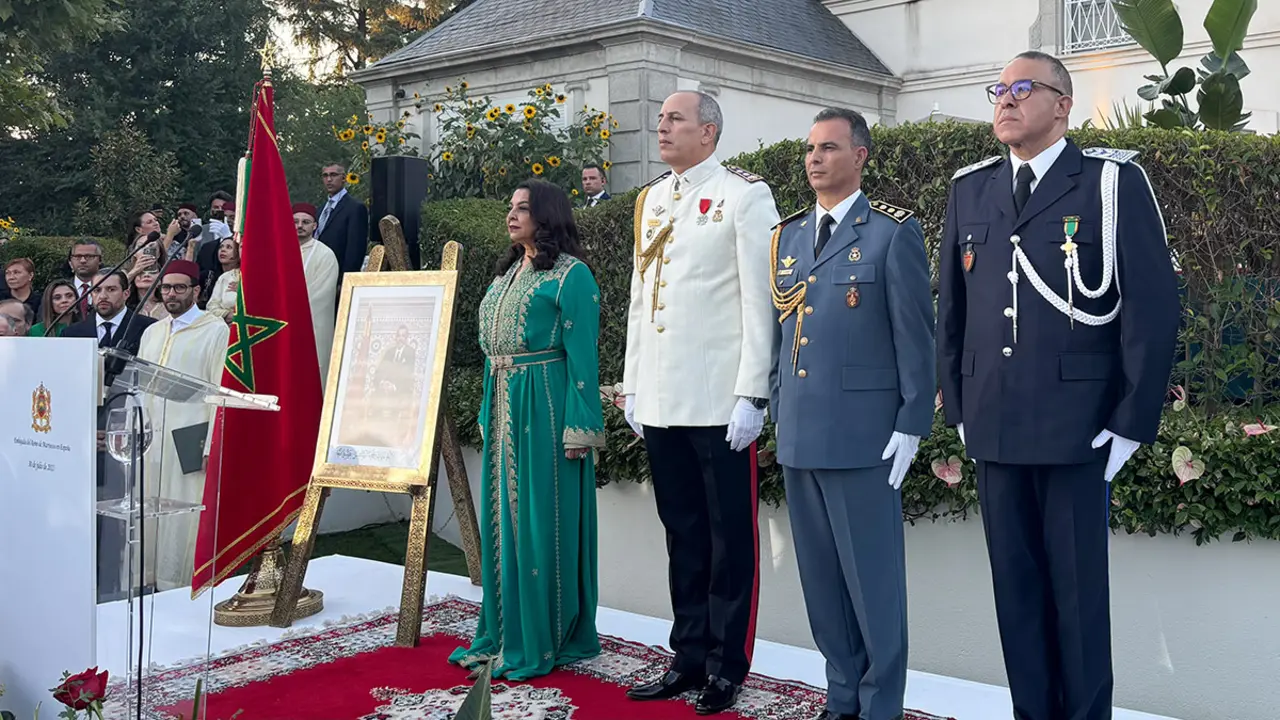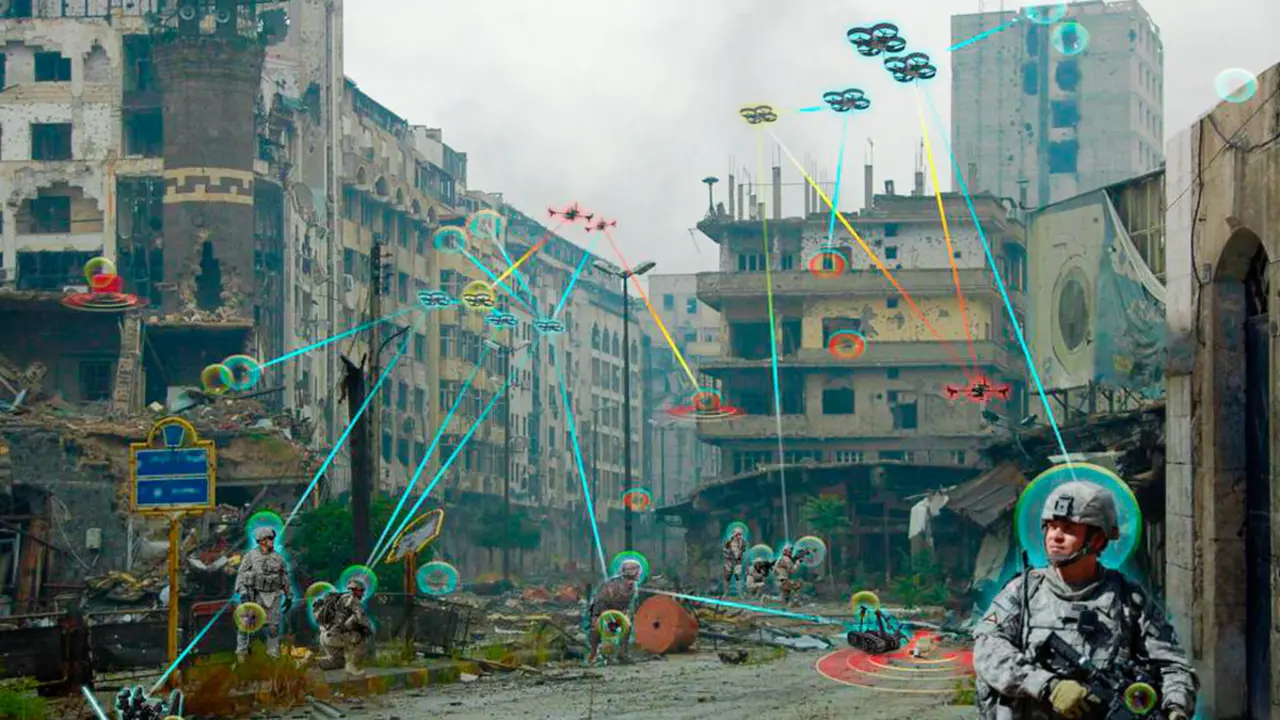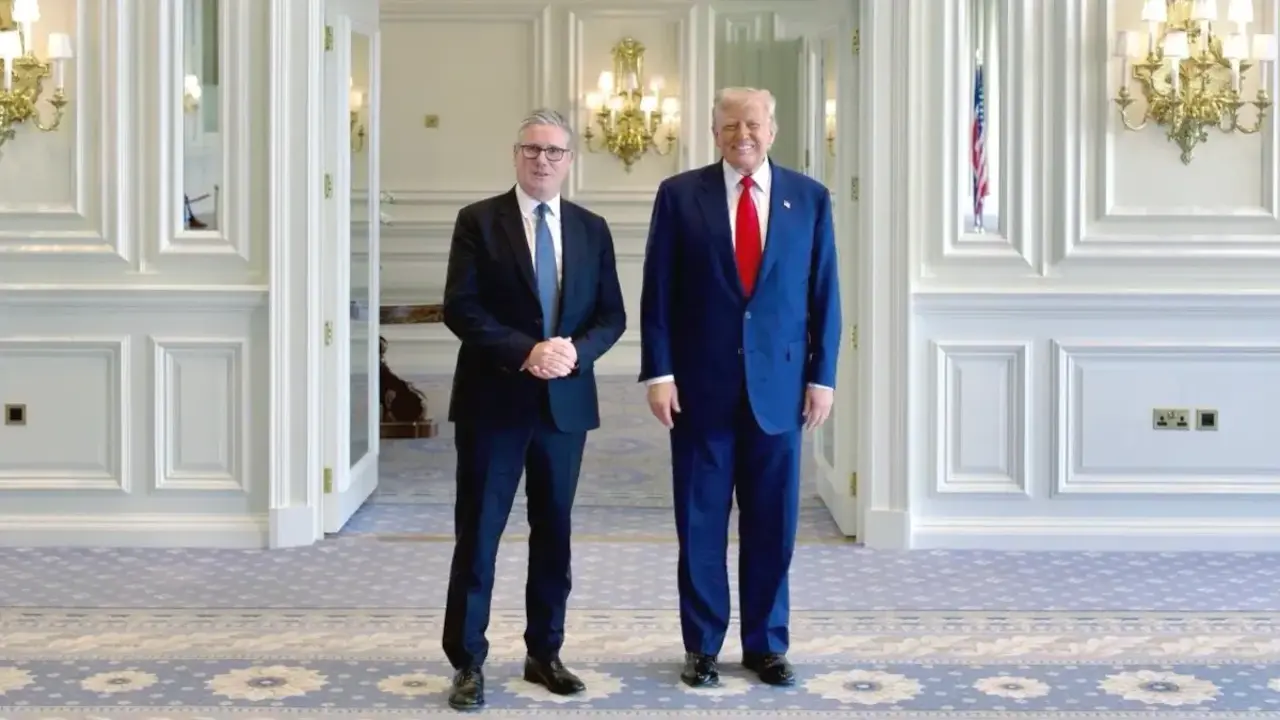Zaludny's dismissal puts Zelensky on the ropes
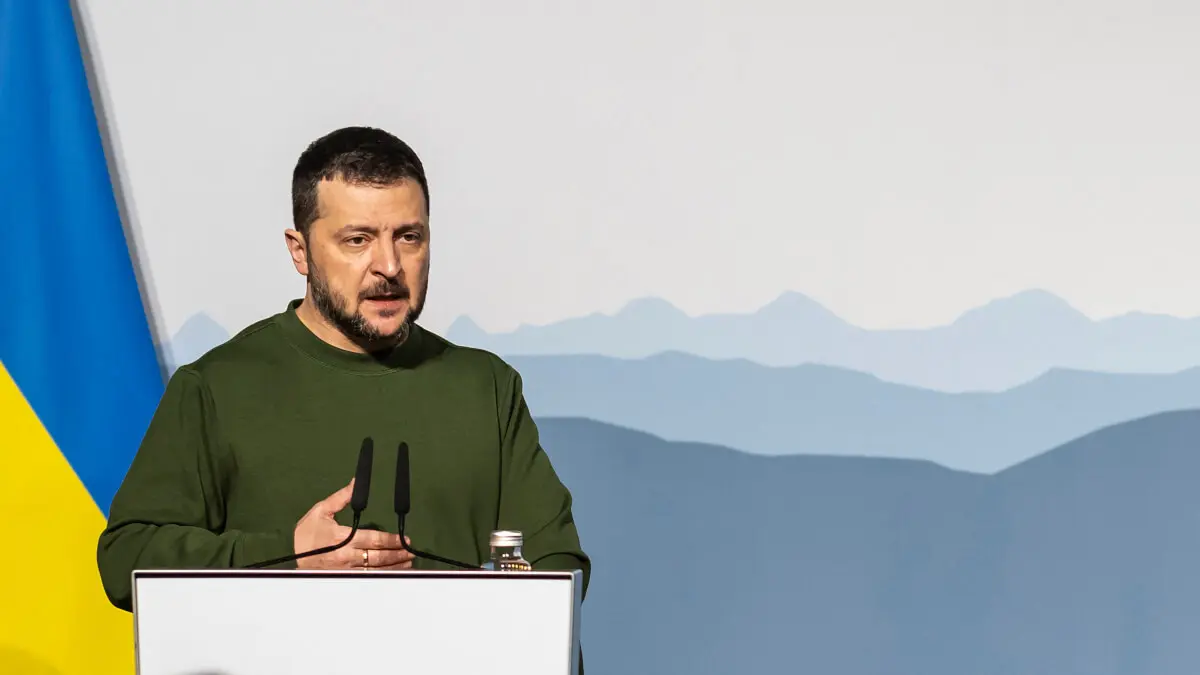
The war in Ukraine continues. The change in the Ukrainian military leadership has been consummated, something that has been talked about for more than a week. President Volodimir Zelenski has replaced the commander-in-chief of the Ukrainian Armed Forces. This issue was discussed by journalist and correspondent María Senovilla on Onda Madrid's "De cara al mundo" programme.
María Senovilla, where are you at the moment?
I am on the front line of combat in Bajmut on the front line of contact. The soldiers themselves have helped me to position myself further back so that I can connect with you. We are in the middle of an offensive. The Russians are trying to bring in several columns of infantry to try to attack the Ukrainian positions.
This is the largest mobilisation of Russian troops in the area in a long time. Both Ukrainian artillery and tanks are giving their all. The artillery duel is considerable to repel the Russian entry.
The change of leadership has been consummated, how has the news been received among the Ukrainians? Have you been able to talk to some of the soldiers to find out what they think of these political moves?
I've been trying all day to find out what the soldiers think, but as soon as they hear that I want to record the conversation, they don't say anything because they don't think they should evaluate political decisions. Personally, they seem broken. Zaludny, beyond being the head of the Armed Forces, was a real leader.
The support he had from both the civilian population and the military will be very difficult for General Oleksandr Syrskyi to win over. He is another profile of a military man who represents an older, more Soviet-style strategy. It was Zaludny who, when the conflict with Russia began, told Zelensky: "We can resist, we are going to resist", and over the last two years he has carried the weight of the initiative for everything the Ukrainian army has achieved. In a war of attrition such as this one, just holding out against the Russian army was something no one counted on. But Zaludny, from minute one, gave them that spirit and that courage.
So far it is a change that is leaving long faces on the front lines and in conversations among the soldiers themselves. Even so, they say they do not expect any major changes in strategy in the coming weeks or months. It is still winter, so the advance of troops on both sides is complicated by the weather conditions. So we are still on standby.

It was probably more of a political decision than a military one, wasn't it?
After the failed summer counteroffensive and after Zaludny's statements that the war was entering a dead end, all relations between the head of the Armed Forces and President Zelensky were burned. Even though these problems were known, Zaludny was kept in place largely because of popular, not just military, support, and we will have to see how much this decision cost Zelensky politically and popularly.
Because this is overlapping with the compulsory mobilisation law with which the army intends to enlist more than 500,000 citizens as new recruits. It is being debated in the Ukrainian Congress. There are a number of very controversial measures aimed at enlisting civilian men into the army, and the deputies are not prepared to approve certain things. This has created a political earthquake, and we will see what the final cost will be for the president.
Who is Zaludny's replacement, General Oleksandr Syrskyi? NATO countries that support Ukraine surely have a say, and they understand that this support has to be directed in the best possible way.
This decision has already been discussed with NATO forces and EU leaders. There was already a threat of dismissal 10 days ago. Syrskyi's picture is already on the army's website. In the description, the first thing that appears is that in 2013 he was part of a commission that negotiated with NATO to adapt the Ukrainian army to a possible Russian offensive. This is symbolic. Syrskyi is far removed from NATO doctrines and yes, he has accumulated successes in these two years of invasion, which positioned him quite clearly as number two in the event of Zaludny's dismissal.
Syrskyi was in charge of the defence of Kiev, he was the one who managed to maintain the siege of Kiev, and he managed to get the Russians to withdraw 5-6 weeks later. He also commanded the eastern front in Kharkov, which for months had been the city most besieged by Russian troops. There were days with more than 30 attacks in 24 hours.
The general devised a layered defence of the city of Kharkov, where Russian troops were only 20 kilometres from the city, and thus managed to contain the invasion, which, if Russian troops had taken the second most important city in Ukraine, would probably not be on the terms it is now, but would be much, much worse. After successfully repelling the siege of the city of Kharkov, it was he who commanded the successful counter-offensive of autumn 2022, with which the Ukrainian Armed Forces managed to recapture no less than 30% of the territory that Russia had occupied.

A few months later, that counteroffensive ended in November 2022, more or less, and fighting on the Soledad-Bakhmut axis began quickly in January 23. And it was there that the war became entrenched, where a huge amount of resources were lost, above all human resources, above all people. There were days when 400-500 casualties were caused on the front line in Bakhmut. A barbarity that Syrskyi maintained, some say unnecessarily, others say it served to give the other battlefronts a breathing space. The truth is that, in view of what happened in the months that followed, the huge human losses that were recorded in Bakhmut seem unnecessary, because during all this time, what the Russian army did, apart from sending Wagner's mercenaries to the city of Bakhmut to try to take that place, was to fortify the defences of the southern front, the entire Zaporilla line, to sow it completely with anti-personnel mines, anti-tank mines, those dragon's teeth barriers they call them, which are concrete blocks that prevent armoured vehicles from getting through. And when that summer counteroffensive was finally launched, well, it came crashing down on all those Russian defensive fortifications.
Syrskyi's trajectory over the two years of the invasion has been a bit of a rollercoaster. His successes, both in containing the encirclement of Kiev and, well, the siege of Kiev, are to be celebrated. And also, well, the siege of the city of Kharkov, as well as the successful counter-offensive that liberated Kharkov. But we should also point out that the strategy he maintained with Bakhmut, with Soledad, a purely Soviet strategy, of you put a thousand men, I'll put another thousand in front of them and they'll kill each other, which is a far cry from the NATO doctrines that the Ukrainian armed forces need right now if they want to make a difference. Let it help them to turn around what is happening on the battlefield.
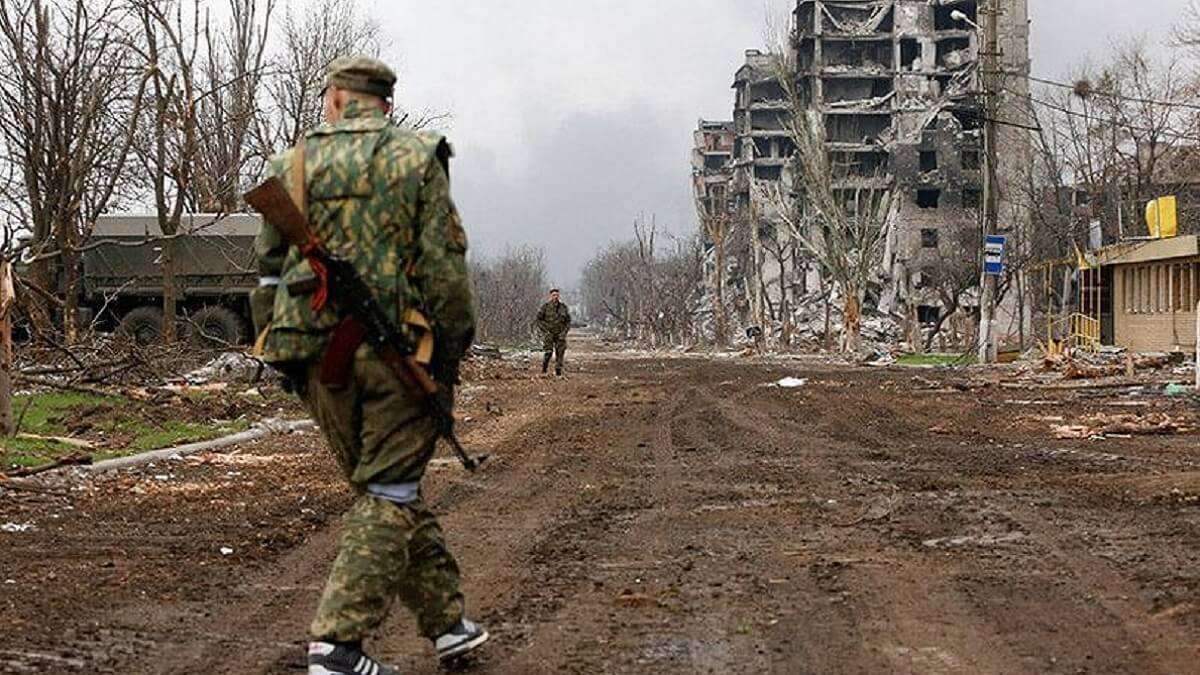
As we are hearing, the Ukrainians are defending themselves as best they can, aren't they, because ammunition is rationed.
Ammunition is in short supply, I've been seeing it all this week, based on the artillery positions, and they tell you that they're usually returning fire once or twice a day at the most, when the drones give them coordinates of, let's say, good targets.
Right now they're not just firing back, right now they're selecting their fire, they're rationing their ammunition, and what's happening today is because right now there's an ongoing attempt by the Russians to move in the direction of Chastellar, and they're trying to stop the attack, but the Ukrainians would be patiently waiting for the best coordinates to give them to launch that attack to keep the Russians at bay.
The lack of ammunition is a very serious problem, they are suffering from it in all positions. If you look at the arsenals, they are less than half full, where you used to see 122, 152 millimetre ammunition, now the boxes are scarce, they are in need of ammunition, they say so themselves, and, while this is going on, the US Congress is paralysing the aid they are waiting for like water under the bridge.




